
VLT
®
5000 Series
MN.50.T1.02 - VLT is a registered Danfoss trademark
■■
■■
■ Abstract
This application note describes the benefits of using
VLT 5000 for extruders in the plastics and man-
made fibre processing industries.
■■
■■
■ Introduction
An extruder is the name of a machine which pushes
different kinds of materials through a die. Many
different materials can be extruded, such as clays,
foods, metals, chemicals and plastics. Depending on
the material and application - extruders come in
numerous types and sizes.
The most common type of extruder is the screw
extruder which is used in the plastics and man-
made fibre processing industries:
The material is usually fed into the machine as a
solid granulate. After plasticating or melting the
material the screw pushes the material to a die or
spinning head which determines the shape and size
of the final product. Typical products: Blown plastic
films, plastic pipes, plastic profiles and man-made
textile fibres.
Fig. 1 shows a typical screw extruder for plastics
processing. The raw materials enter the extruder in
the feed section and the rotating screw moves the
material forward to the compression section. In this
zone the pressure builds up and the friction
between the granulated particles plasticates the
material. In the metering section the liquid material
is pushed to the die.
Feed section
Compression
Metering section
Fig. 1

VLT
®
5000 Series
MN.50.T1.02 - VLT is a registered Danfoss trademark
Fig. 2 shows an example of an extruder with a
direct drive.
A screw extruder can have one screw (single screw
extruder) or several screws. The single screw
extruder is the most common extruder in the
plastics processing industry. The typical speed of a
single screw extruder is 100 rpm, where two screw
extruders run at either high or low speed, depen-
ding on the application.
A typical high speed two screw application is used
where two products are mixed. Here the speed is
about 200-500 rpm. Low speed extruders with two
screws run at 10-40 rpm and are often used in
profile extrusion applications.
When there is a direct coupling between the motor
and the gearbox, the extruder is directly driven, see
fig. 2. The advantages of direct driven extruders
are:
● No belt slippage
● Better energy efficiency
● Fewer mechanical parts
The disadvantage of a directly driven extruder is that
it is (more) difficult to change the reduction ratio for
different products.
Fig. 2
■■
■■
■ Directly driven extruder
Encoder
VLT 5000
Feed
hopper
Gear
Raw
material
Final
product

VLT
®
5000 Series
!
MN.50.T1.02 - VLT is a registered Danfoss trademark
When there is a belt between the motor and the
gearbox, the extruder is indirectly driven, see fig.
3
The advantages of indirectly driven extruders are:
● Easy to change the reduction ratio
● More freedom to place the motor
● Less torque ripple
The disadvantages of indirectly driven extruders
are:
● Belt slippage
● Energy loss in the belts
● More mechanical parts that can wear out and
fail
■ ■
■ ■
■ The tradition:
In a traditional extruder system the screw is driven
by an electric DC motor and it is either driven
directly by a gearbox or indirectly through belts and
sheaves at the gearbox.
Traditional DC motors have some disadvantages as
they need replacement of brushes approx. every 6
months. In dusty or aggressive environments the
DC motor must be cleaned regularly and in some
cases clean cooling air for the DC motor must be
supplied from the outside of the building.
Fig. 3
■■
■■
■ Indirectly driven extruder
Primary symptoms of DC motor problems are
excessive noise, brush sparking, discoloured
armature, high motor temperature, inadequate
exhaust air flow and motor vibration. Therefore, the
extruders with DC motors are more expensive to
maintain and the initial costs of DC motors are
higher.
Encoder
Belts
VLT 5000
Feed
hopper
Gear
Raw
material
Final
product

VLT
®
5000 Series
"
MN.50.T1.02 - VLT is a registered Danfoss trademark
■ The new standard:
● Improved performance:
By replacing the DC-motor with an AC motor and
controlling the AC-motor with VLT 5000 you will
have the same speed control and performance as
a DC motor. The extruders are often fitted with
encoder feedback and as the speed deviation of
VLT 5000 in closed loop mode is less than 0.1% it
is far better than most DC drives. When operating
in open loop mode (without encoder feedback) the
speed deviation is less than 0.5 %.
50 Hz 70 Hz
Tor
q
ue [%]
T
MAX
(
1min
)
200-250% x T
s
y
stem
T
nom
for the
motor
T
s
y
stem
Fre
q
uenc
y
T
y
pical operatin
g
fre
q
uenc
y
100 Hz
● Improved technology:
A few years ago the power electronics in frequency
converters were not able to give AC motors the
same shaft performance as a DC motor.
Furthermore, AC drives were more expensive than
DC drives.
But with the recent progress in power electronics
and microprocessor technology, the AC system has
become a better and a more cost efficient solution
compared to a DC system for many applications.
The required brake-away torque for the extruder
screw may go as high as 200-250% of nominal
torque. Using AC systems this is solved by selecting
an oversize drive or operating the motor up in the
field weakening range. The full nominal torque is
usually not needed at full speed.

VLT
®
5000 Series
#
MN.50.T1.02 - VLT is a registered Danfoss trademark
■ The new standard:
● Improved energy efficiency:
The energy efficiency of an AC system with VLT
5000 is typically 5% higher than in a similar DC
system. The efficiency in a high quality AC motor is
better than in a DC motor and the VVC
plus
control
system of the VLT 5000 ensures optimum shaft
performance without excessive heating.
Extruders use a large proportion of the electricity in
a plant. The VLT 5000 creates much less harmonic
current distortion (better power factor) than a DC
drive, thus eliminating the need for oversizing the
transformer and cables.
Extruders are often fitted with square frame AC
motors with superior torque characteristics and
dimensions similar to DC motors.
AC systems are price competitive up to approx. 50-
100 kW when comparing cost price only. However,
when considering the total cost of ownership, AC
systems are competitive up to approx. 200 kW.
●●
●●
● Improved environment:
As the extruder plants often are situated in an
environment with aggressive gases, high temperature
and dust, it is necessary that the motor is not
affected by the environment. The AC motors have
also an advantage compared with the DC motors as
the AC motor is able to resist an aggressive
environment. A DC motor in an aggressive
environment needs more maintenance because oil,
dust and chemical vapours have a negative impact
on the performance of the commutator bar and
brushes.
● Improve the extruder with a square frame
AC motor:
A square frame AC motor is a compact asyn-
chonous motor which has a considerably smaller
physical size than a standard AC motor. Therefore, it
is easier to replace a DC motor with a square frame
AC motors as they often have almost the same
mechanical size. A square frame AC motor has
better dynamic torque characteristics than a
standard AC motor.
Another good feature by square frame motors is that
they have a higher break-down torque than normal
asynchronous motors. Especially in the field
weakening range a square frame motor has a higher
break-down torque.
It is possible to have square frame AC motors with a
built-in encoder and with an IP 55 enclosure rating.

VLT
®
5000 Series
$
MN.50.T1.02 - VLT is a registered Danfoss trademark
■ VLT 5000 Control principle
After automatic motor adaptation, VVC
plus
will help
to ensure extremely accurate motor control.
Advantages of the VVC
plus
control system:
· Accurate speed control, now even at low
speed.
· Quick response from received signal to full
motor shaft torque.
· Good compensation for step loads.
· Controlled transition from normal operation to
current limit operation (and vice versa).
· Reliable torque protection throughout the speed
range, also in the field weakening range.
· High tolerance towards varying motor data.
· Extruder screw protection by limiting the shaft
torque.
· Full holding torque (closed loop)
As standard, VLT 5000 Series comes with a number
of integral components that would normally have to
be acquired separately. These integral components
(RFI filter, DC coils, screen clamps and serial
communication port) are space-savers that
simplifying installation, since VLT 5000 Series fulfils
most requirements without any supplementary
components.
An extruder application with VLT 5000 encoder
feedback has the following speed accuracy:
Frequency range: 0 - 1000 Hz
Resolution on output frequency: ±0.003 Hz
Speed accuracy (closed loop): < 1500 rpm: max
deviation ±1.5 rpm
First and foremost, the current and the motor
model calculations are very good. The current is
split into magnetising and torque-generating parts
and provides for accurate and quick estimation of
the actual motor loads. It is thus possible to
compensate for rapid load changes. Full torque as
well as extremely accurate speed control can be
obtained at low speeds or even at standstill.
Good torque control properties, smooth transitions
to and from current limit operation and robust pull-
out torque protection are ensured.
The VLT 5000 Series features an inverter control
system called VVC
plus
.
VVC
plus
controls an induction motor by energizing it
with a variable frequency and a voltage to match it.
If the motor load is changed, the magnetisation of
the motor changes too, and so does its speed.
Consequently, the motor current is measured
continuously and the actual voltage requirements of
the motor are calculated from a motor model.
Motor frequency and voltage are adjusted to
ensure that the motor performance remains best
possible under varying conditions.
With the VVC
plus
the regulation is robust and tolerant
to different motor characteristic and motor derating
is not necessary.

VLT
®
5000 Series
%
MN.50.T1.02 - VLT is a registered Danfoss trademark
■ Typical wiring example for an extruder application
This example shows an extruder application with
encoder feedback and a pressure switch that stops
the extruder if the pressure gets to high.
Here the VLT 5000 is set to Speed control, closed loop
in parameter 100 Configuration. With an encoder of
1024 pulses/rev you will have full torque and accurate
speed control at low speed.
Function: Parameter: Setting: Data value:
Activation of Speed regulator 100 Speed control, closed loop [1]
Quick stop ramp-down time 212 1 sec.
Digital input, terminal 27 304 Quick stop inverse [1]
Digital input, terminal 32 306 Encoder feedback input B [24]
Digital input, terminal 33 307 Encoder feedback input A [25]
Encoder feedback, pulse/rev. 329 1024 pulses/rev. [1024]
Minimum feedback 414 0 rpm
Maximum feedback 415 1650 rpm (max. ref. + 10%)
Proportional gain 417 Application-dependent
Integration time 418 Application dependent
Differentiation time 419 Application dependent
The maximum torque on the extruder can be set
in parameter 221 Torque limit. A warning or alarm
can be displayed on the LCP or via the output
relay if the torque exceeds over the torque limit.
As it is set to torque limit you can avoid an
overload on the extruder.
L1
L2
L3
M
24
Vdc
Pressure switch
24 V push-pull
Encoder
12
27
18
32
33
50
53
55
VLT 5000
Reference

VLT
®
5000 Series
&
MN.50.T1.02 - VLT is a registered Danfoss trademark
Other applications in extruder systems
Other applications in an extruder systems which can
be controlled with Danfoss VLT frequency converters
are temperature control in the extruder, pump
control and feed hopper control.
It is important to keep the correct temperature in
the extruder through the process, and the control of
the temperature is often done with fans. The
temperature sensors can be connected as a
feedback signal to the VLT frequency converter and
the temperature will be controlled to a fixed setpoint.
A high output stability is difficult to achieve, as the
extruder has some limitations. So the best way to
improve the output stability is to add a gear pump to
the extruder. The pump is placed between the
extruder and the die. The speed of the pump can be
controlled precisely by a VLT frequency converter.
The feed hopper holds the plastic pellets or powder
and discharges the material into the feed section. A
VLT frequency converter can control the feed
hopper so that the material has a steady flow
through the feed hopper and down to the feed
section.
■
■ Benefits overview for AC drives (VLT 5000):
· Less costs of maintenance
· Energy savings
· Higher efficiency on AC motors
· Higher starting torque
· Better dynamics
· Can be installed in aggressive environments
(gasses, dust etc.)
· AC motors are cheaper than DC motors
· Low harmonic current distortion
· AC systems are easier to install and
commission.
Encoder
Belts
VLT 5000
Fans for the extruder
Temperature
control
Pump
control
Feed hopper
control
Gear
Pressure switch
-
 1
1
-
 2
2
-
 3
3
-
 4
4
-
 5
5
-
 6
6
-
 7
7
-
 8
8
Danfoss VLT® 5000 Extruders User guide
- Type
- User guide
- This manual is also suitable for
Ask a question and I''ll find the answer in the document
Finding information in a document is now easier with AI
Related papers
-
Danfoss VLT Micro Drive FC 51 Installation guide
-
Danfoss VLT® AQUA Low Harmonic Drive Operating instructions
-
Danfoss VLT 5000 (Legacy Product) Operating instructions
-
Danfoss VLT® PM Motors Operated by VVCplus PM User guide
-
Danfoss VLT AutomationDrive FC 302 User guide
-
Danfoss VLT AutomationDrive FC 360 Installation guide
-
Danfoss VLT AutomationDrive FC 301 Programming Guide
-
Danfoss VLT® AutomationDrive User guide
-
Danfoss VLT® AutomationDrive User guide
-
Danfoss VLT® AutomationDrive User guide
Other documents
-
Shimpo NVS-07 User manual
-
Sterling 882.00722.00 User manual
-
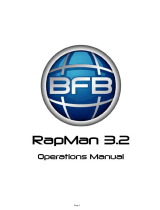 BFB RapMan 3.2 Operating instructions
BFB RapMan 3.2 Operating instructions
-
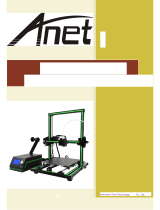 Anet E10 Troubleshooting Manual
Anet E10 Troubleshooting Manual
-
 Geeetech GT2560 User manual
Geeetech GT2560 User manual
-
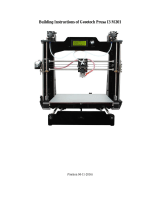 Geeetech Prusa I3 M201 Building Instructions
Geeetech Prusa I3 M201 Building Instructions
-
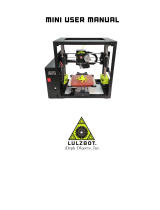 LulzBot Mini User manual
LulzBot Mini User manual
-
Amazon 3000 Owner's manual
-
Sterling Welder 882.01749.00 User manual
-
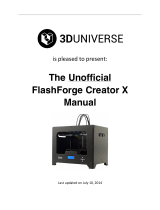 3DUniverse FlashForge Creator X User manual
3DUniverse FlashForge Creator X User manual













